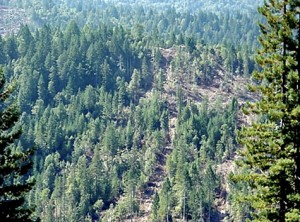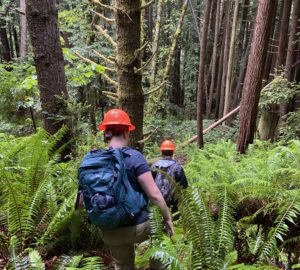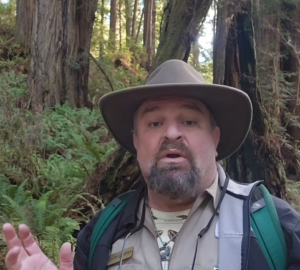
An article on the London-based Guardian website caught my eye last week. Having completed an exhaustive study in the Brazilian Amazon, scientists have determined that even if deforestation halted across the region overnight, dozens of species are doomed to disappear. To put it simply, when their homes are removed, the species can hang on for a while, but over time competition for food increases, breeding rates fall and a slow death sentence lingers over them. It makes for grim reading. But the story does end on a positive note: “to prevent species extinctions it is necessary to take advantage of the window of opportunity for forest regeneration. Restored forests . . . gradually recover species richness.”
Nowhere is this truer than in the redwood forests, some of the most productive forests in the world. I also feel we are at a turning point in the history of the redwoods.
The story of the redwoods is a familiar one. In a little more than a century, 95 percent of the ancient forest was logged at least once. The places that survived were either too difficult to get to, beloved by some family who made sure they were not logged, or purchased by groups like Save the Redwoods League. The extinction threat in the redwoods is very real, and species including the endangered marbled murrelet, northern spotted owl and wild coho salmon live with it daily.
Today across much of the landscape, the redwood forest is slowly recovering. This is happening in parks and reserves – places set aside for their natural qualities. For instance, at Mill Creek the League and our conservation partners are 10 years into an ambitious program to restore wildness to this 25,000-acre former tree farm by removing roads and giving young forests a helping hand. And recovery is also underway on lands owned by the timber companies. Yes they still log – after all, most of us love wood, and personally I prefer to know that it comes from a responsibly managed forest that I can go and see, rather than some unknown far-off land. But California’s timber companies have fundamentally changed the way they log – for the better – and are also working to remove the scars from former bad practices, for instance by restoring salmon spawning habitat formerly blocked by culverts.
If we are to provide a lifeboat for these species to make it through the coming extinction threat, it is critical that we work together across whole landscapes. We can no longer separate the parks from the timberlands and think of them separately. After all, birds and fish can’t read our maps and make little distinction between a young forest in park and a young forest in timberland. If the past 100 years of redwood conservation have been defined by conflict and forest degradation, I am optimistic that the next 100 years will be defined by collaboration and recovery. You can learn more about my outlook by reading the keynote I gave last year at the League-sponsored science symposium, The Coast Redwood Forests in a Changing California.








